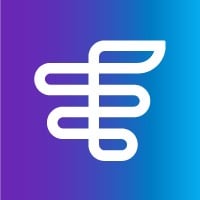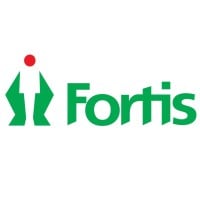
EvergreenHealth Company Cyber Security Posture
evergreenhealth.comEvergreenHealth, a public hospital district and community-owned health care system established in 1972, offers a breadth of services and programs that is among the most comprehensive in the region. With two hospitals in Kirkland and Monroe and dozens of practices across the region, we serve more than 1 million of our service area in north King and south Snohomish counties, ensuring access close to home and work. Our 1,100+ physicians provide the most advanced and personalized care with more than 80 primary and specialty services, giving all of our patients a highly collaborative, compassionate experience every time they walk through our doors. As a public hospital district, EvergreenHealth’s resources and services are in part funded by our community, which means we are accountable to you and everyone we serve. The community’s support allows us to go beyond clinical care and offer community health outreach, education programs and free services like our Healthline, which connects you with a 24/7 consulting nurse service, health information, appointment scheduling assistance, class registration, and more. For more information, visit: https://www.evergreenhealth.com/
EvergreenHealth Company Details
evergreenhealth
2867 employees
14579
62
Hospitals and Health Care
evergreenhealth.com
Scan still pending
EVE_6313345
In-progress
Between 800 and 900
This score is AI-generated and less favored by cyber insurers, who prefer the TPRM score.
 EvergreenHealth Global Score
EvergreenHealth Global Score.png)

EvergreenHealth Company Scoring based on AI Models
| Model Name | Date | Description | Current Score Difference | Score |
|---|---|---|---|---|
| AVERAGE-Industry | 03-12-2025 | This score represents the average cybersecurity rating of companies already scanned within the same industry. It provides a benchmark to compare an individual company's security posture against its industry peers. | N/A | Between 800 and 900 |
EvergreenHealth Company Cyber Security News & History
| Entity | Type | Severity | Impact | Seen | Url ID | Details | View |
|---|---|---|---|---|---|---|---|
| EvergreenHealth | Breach | 80 | 4 | 12/2021 | EVE3811622 | Link | |
Rankiteo Explanation : Attack with significant impact with customers data leaksDescription: EvergreenHealth, King County Public Hospital District No. 2 fell victim to the data breach incident after third-party company Eye Care Leaders, which provides the myCare Integrity electronic medical record (EMR) platform to it suffered a data security incident. An unauthorized party accessed myCare Integrity data around December 4, 2021, and deleted some databases and system configuration files containing the information of 20,533 individuals. The compromised information may include patient names, dates of birth, medical record numbers, and information regarding care received at EvergreenHealth Eye Care Clinic. EvergreenHealth notified and appolozised the impacted individuals about the breach. | |||||||
EvergreenHealth Company Subsidiaries

EvergreenHealth, a public hospital district and community-owned health care system established in 1972, offers a breadth of services and programs that is among the most comprehensive in the region. With two hospitals in Kirkland and Monroe and dozens of practices across the region, we serve more than 1 million of our service area in north King and south Snohomish counties, ensuring access close to home and work. Our 1,100+ physicians provide the most advanced and personalized care with more than 80 primary and specialty services, giving all of our patients a highly collaborative, compassionate experience every time they walk through our doors. As a public hospital district, EvergreenHealth’s resources and services are in part funded by our community, which means we are accountable to you and everyone we serve. The community’s support allows us to go beyond clinical care and offer community health outreach, education programs and free services like our Healthline, which connects you with a 24/7 consulting nurse service, health information, appointment scheduling assistance, class registration, and more. For more information, visit: https://www.evergreenhealth.com/
Access Data Using Our API

Get company history
.png)
EvergreenHealth Cyber Security News
Ingram Micro Issues Statement Regarding Cybersecurity Incident
Ingram Micro recently identified ransomware on certain of its internal systems. Promptly after learning of the issue, the Company took steps to ...
Qantas attack reveals one phone call is all it takes to crack cybersecurity’s weakest link: humans
Other sectors also at risk from attacks, including healthcare, finance and telecommunications, expert warns.
3 Top Cybersecurity Stocks to Buy in July
Three of the best cybersecurity stocks you can buy in July are Check Point Software Technologies (NASDAQ: CHKP), International Business Machines ...
SentinelOne: An Undervalued Cybersecurity Powerhouse Set To Explode With Non-Kernel Platform Integration
SentinelOne (NYSE:S) is an AI-powered cybersecurity "Sentinel" that unifies endpoint, cloud, identity, and data protection for enterprises under ...
Why detecting dangerous AI is key to keeping trust alive in the deepfake era
Fraudsters using AI-generated deepfakes are being an increasing cybersecurity threat. Deepfake fraud highlights why we need to safeguard against ...
How Sacramento transgender cybersecurity expert doubles as an activist | Opinion
A Black transgender cybersecurity expert & data scientist from the Capitol region, uses her skills & voice to advocate for LGBTQ+ rights ...
SEO Poisoning Campaign Targets 8,500+ SMB Users with Malware Disguised as AI Tools
SEO poisoning delivers trojanized tools, targeting SMBs and spreading malware via fake websites.
5 stock picks from an analyst for a new era of cybersecurity threats
Tech expert Arnie Bellini lays out his picks for the best cybersecurity stocks to buy for a likely federal cyber defense push.
Cyber Alert Karnataka: Cybersecurity Deficit Exposed as Attacks Surge
Digital Safety India: Karnataka faces Rs 2915 crore in cybercrime losses in 2024, exposing major cybersecurity gaps across sectors.

EvergreenHealth Similar Companies

Encompass Health
Encompass Health is the largest owner and operator of rehabilitation hospitals in the United States. With a national footprint that includes 158 hospitals in 37 states and Puerto Rico, the Company provides high-quality, compassionate rehabilitative care for patients recovering from a major injury or

Kailash Healthcare Ltd
Kailash Group of Hospitals have been ranked amongst the top & best hospitals in India for advanced medical services touching the lives of over million patients. Over the past four decades, Kailash Group’s transformative journey has laid a legacy of excellence in Indian healthcare with extending its

Hospital Albert Einstein
O nascimento da Sociedade Beneficente Israelita Brasileira Albert Einstein, na década de 50, resultou do compromisso da comunidade judaica em oferecer à população brasileira uma referência em qualidade da prática médica. Mas a Sociedade queria ir além da simples construção de um hospital. E assi

Fortis Healthcare
Fortis Healthcare Group is a leading integrated healthcare provider operating across the Asia Pacific region. With more than 20,000 employees and growing, Fortis Helathcare is currently present in Australia, Canada, Hong Kong SAR, India, Mauritius, New Zealand, Singapore, Sri Lanka, UAE, and Vietnam

Ochsner Health
Ochsner Health is the leading nonprofit healthcare provider in the Gulf South, delivering expert care at its 46 hospitals and more than 370 health and urgent care centers. For 13 consecutive years, U.S. News & World Report has recognized Ochsner as the No. 1 hospital in Louisiana. Additionally, Ochs

WellSpan Health
WellSpan Health’s vision is to reimagine healthcare through the delivery of comprehensive, equitable health and wellness solutions throughout our continuum of care. As an integrated delivery system focused on leading in value-based care, we encompass nearly 1,900 employed providers, 220 locations, e

Frequently Asked Questions (FAQ) on Cybersecurity Incidents
EvergreenHealth CyberSecurity History Information
Total Incidents: According to Rankiteo, EvergreenHealth has faced 1 incidents in the past.
Incident Types: The types of cybersecurity incidents that have occurred include ['Breach'].
Total Financial Loss: The total financial loss from these incidents is estimated to be {total_financial_loss}.
Cybersecurity Posture: The company's overall cybersecurity posture is described as EvergreenHealth, a public hospital district and community-owned health care system established in 1972, offers a breadth of services and programs that is among the most comprehensive in the region. With two hospitals in Kirkland and Monroe and dozens of practices across the region, we serve more than 1 million of our service area in north King and south Snohomish counties, ensuring access close to home and work. Our 1,100+ physicians provide the most advanced and personalized care with more than 80 primary and specialty services, giving all of our patients a highly collaborative, compassionate experience every time they walk through our doors. As a public hospital district, EvergreenHealth’s resources and services are in part funded by our community, which means we are accountable to you and everyone we serve. The community’s support allows us to go beyond clinical care and offer community health outreach, education programs and free services like our Healthline, which connects you with a 24/7 consulting nurse service, health information, appointment scheduling assistance, class registration, and more. For more information, visit: https://www.evergreenhealth.com/.
Detection and Response: The company detects and responds to cybersecurity incidents through {description_of_detection_and_response_process}.
Incident Details
Incident 1: Ransomware Attack
Title: {Incident_Title}
Description: {Brief_description_of_the_incident}
Date Detected: {Detection_Date}
Date Publicly Disclosed: {Disclosure_Date}
Date Resolved: {Resolution_Date}
Type: {Type_of_Attack}
Attack Vector: {Attack_Vector}
Vulnerability Exploited: {Vulnerability}
Threat Actor: {Threat_Actor}
Motivation: {Motivation}
Incident 2: Data Breach
Title: {Incident_Title}
Description: {Brief_description_of_the_incident}
Date Detected: {Detection_Date}
Date Publicly Disclosed: {Disclosure_Date}
Date Resolved: {Resolution_Date}
Type: {Type_of_Attack}
Attack Vector: {Attack_Vector}
Vulnerability Exploited: {Vulnerability}
Threat Actor: {Threat_Actor}
Motivation: {Motivation}
Common Attack Types: As of now, the company has not encountered any reported incidents involving common cyberattacks.
Identification of Attack Vectors: The company identifies the attack vectors used in incidents through {description_of_identification_process}.
Impact of the Incidents
Incident 1: Ransomware Attack
Financial Loss: {Financial_Loss}
Data Compromised: {Data_Compromised}
Systems Affected: {Systems_Affected}
Downtime: {Downtime}
Operational Impact: {Operational_Impact}
Conversion Rate Impact: {Conversion_Rate_Impact}
Revenue Loss: {Revenue_Loss}
Customer Complaints: {Customer_Complaints}
Brand Reputation Impact: {Brand_Reputation_Impact}
Legal Liabilities: {Legal_Liabilities}
Identity Theft Risk: {Identity_Theft_Risk}
Payment Information Risk: {Payment_Information_Risk}
Incident 2: Data Breach
Financial Loss: {Financial_Loss}
Data Compromised: {Data_Compromised}
Systems Affected: {Systems_Affected}
Downtime: {Downtime}
Operational Impact: {Operational_Impact}
Conversion Rate Impact: {Conversion_Rate_Impact}
Revenue Loss: {Revenue_Loss}
Customer Complaints: {Customer_Complaints}
Brand Reputation Impact: {Brand_Reputation_Impact}
Legal Liabilities: {Legal_Liabilities}
Identity Theft Risk: {Identity_Theft_Risk}
Payment Information Risk: {Payment_Information_Risk}
Average Financial Loss: The average financial loss per incident is {average_financial_loss}.
Commonly Compromised Data Types: The types of data most commonly compromised in incidents are {list_of_commonly_compromised_data_types}.
Incident 1: Ransomware Attack
Entity Name: {Entity_Name}
Entity Type: {Entity_Type}
Industry: {Industry}
Location: {Location}
Size: {Size}
Customers Affected: {Customers_Affected}
Incident 2: Data Breach
Entity Name: {Entity_Name}
Entity Type: {Entity_Type}
Industry: {Industry}
Location: {Location}
Size: {Size}
Customers Affected: {Customers_Affected}
Response to the Incidents
Incident 1: Ransomware Attack
Incident Response Plan Activated: {Yes/No}
Third Party Assistance: {Yes/No}
Law Enforcement Notified: {Yes/No}
Containment Measures: {Containment_Measures}
Remediation Measures: {Remediation_Measures}
Recovery Measures: {Recovery_Measures}
Communication Strategy: {Communication_Strategy}
Adaptive Behavioral WAF: {Adaptive_Behavioral_WAF}
On-Demand Scrubbing Services: {On_Demand_Scrubbing_Services}
Network Segmentation: {Network_Segmentation}
Enhanced Monitoring: {Enhanced_Monitoring}
Incident 2: Data Breach
Incident Response Plan Activated: {Yes/No}
Third Party Assistance: {Yes/No}
Law Enforcement Notified: {Yes/No}
Containment Measures: {Containment_Measures}
Remediation Measures: {Remediation_Measures}
Recovery Measures: {Recovery_Measures}
Communication Strategy: {Communication_Strategy}
Adaptive Behavioral WAF: {Adaptive_Behavioral_WAF}
On-Demand Scrubbing Services: {On_Demand_Scrubbing_Services}
Network Segmentation: {Network_Segmentation}
Enhanced Monitoring: {Enhanced_Monitoring}
Incident Response Plan: The company's incident response plan is described as {description_of_incident_response_plan}.
Third-Party Assistance: The company involves third-party assistance in incident response through {description_of_third_party_involvement}.
Data Breach Information
Incident 2: Data Breach
Type of Data Compromised: {Type_of_Data}
Number of Records Exposed: {Number_of_Records}
Sensitivity of Data: {Sensitivity_of_Data}
Data Exfiltration: {Yes/No}
Data Encryption: {Yes/No}
File Types Exposed: {File_Types}
Personally Identifiable Information: {Yes/No}
Prevention of Data Exfiltration: The company takes the following measures to prevent data exfiltration: {description_of_prevention_measures}.
Handling of PII Incidents: The company handles incidents involving personally identifiable information (PII) through {description_of_handling_process}.
Ransomware Information
Incident 1: Ransomware Attack
Ransom Demanded: {Ransom_Amount}
Ransom Paid: {Ransom_Paid}
Ransomware Strain: {Ransomware_Strain}
Data Encryption: {Yes/No}
Data Exfiltration: {Yes/No}
Ransom Payment Policy: The company's policy on paying ransoms in ransomware incidents is described as {description_of_ransom_payment_policy}.
Data Recovery from Ransomware: The company recovers data encrypted by ransomware through {description_of_data_recovery_process}.
Regulatory Compliance
Incident 1: Ransomware Attack
Regulations Violated: {Regulations_Violated}
Fines Imposed: {Fines_Imposed}
Legal Actions: {Legal_Actions}
Regulatory Notifications: {Regulatory_Notifications}
Incident 2: Data Breach
Regulations Violated: {Regulations_Violated}
Fines Imposed: {Fines_Imposed}
Legal Actions: {Legal_Actions}
Regulatory Notifications: {Regulatory_Notifications}
Regulatory Frameworks: The company complies with the following regulatory frameworks regarding cybersecurity: {list_of_regulatory_frameworks}.
Ensuring Regulatory Compliance: The company ensures compliance with regulatory requirements through {description_of_compliance_measures}.
Lessons Learned and Recommendations
Incident 1: Ransomware Attack
Lessons Learned: {Lessons_Learned}
Incident 2: Data Breach
Lessons Learned: {Lessons_Learned}
Incident 1: Ransomware Attack
Recommendations: {Recommendations}
Incident 2: Data Breach
Recommendations: {Recommendations}
Key Lessons Learned: The key lessons learned from past incidents are {list_of_key_lessons_learned}.
Implemented Recommendations: The company has implemented the following recommendations to improve cybersecurity: {list_of_implemented_recommendations}.
References
Additional Resources: Stakeholders can find additional resources on cybersecurity best practices at {list_of_additional_resources}.
Investigation Status
Incident 1: Ransomware Attack
Investigation Status: {Investigation_Status}
Incident 2: Data Breach
Investigation Status: {Investigation_Status}
Communication of Investigation Status: The company communicates the status of incident investigations to stakeholders through {description_of_communication_process}.
Stakeholder and Customer Advisories
Incident 1: Ransomware Attack
Stakeholder Advisories: {Stakeholder_Advisories}
Customer Advisories: {Customer_Advisories}
Incident 2: Data Breach
Stakeholder Advisories: {Stakeholder_Advisories}
Customer Advisories: {Customer_Advisories}
Advisories Provided: The company provides the following advisories to stakeholders and customers following an incident: {description_of_advisories_provided}.
Initial Access Broker
Incident 1: Ransomware Attack
Entry Point: {Entry_Point}
Reconnaissance Period: {Reconnaissance_Period}
Backdoors Established: {Backdoors_Established}
High Value Targets: {High_Value_Targets}
Data Sold on Dark Web: {Yes/No}
Incident 2: Data Breach
Entry Point: {Entry_Point}
Reconnaissance Period: {Reconnaissance_Period}
Backdoors Established: {Backdoors_Established}
High Value Targets: {High_Value_Targets}
Data Sold on Dark Web: {Yes/No}
Monitoring and Mitigation of Initial Access Brokers: The company monitors and mitigates the activities of initial access brokers through {description_of_monitoring_and_mitigation_measures}.
Post-Incident Analysis
Incident 1: Ransomware Attack
Root Causes: {Root_Causes}
Corrective Actions: {Corrective_Actions}
Incident 2: Data Breach
Root Causes: {Root_Causes}
Corrective Actions: {Corrective_Actions}
Post-Incident Analysis Process: The company's process for conducting post-incident analysis is described as {description_of_post_incident_analysis_process}.
Corrective Actions Taken: The company has taken the following corrective actions based on post-incident analysis: {list_of_corrective_actions_taken}.
Additional Questions
General Information
Ransom Payment History: The company has {paid/not_paid} ransoms in the past.
Last Ransom Demanded: The amount of the last ransom demanded was {last_ransom_amount}.
Last Attacking Group: The attacking group in the last incident was {last_attacking_group}.
Incident Details
Most Recent Incident Detected: The most recent incident detected was on {most_recent_incident_detected_date}.
Most Recent Incident Publicly Disclosed: The most recent incident publicly disclosed was on {most_recent_incident_publicly_disclosed_date}.
Most Recent Incident Resolved: The most recent incident resolved was on {most_recent_incident_resolved_date}.
Impact of the Incidents
Highest Financial Loss: The highest financial loss from an incident was {highest_financial_loss}.
Most Significant Data Compromised: The most significant data compromised in an incident was {most_significant_data_compromised}.
Most Significant System Affected: The most significant system affected in an incident was {most_significant_system_affected}.
Response to the Incidents
Third-Party Assistance in Most Recent Incident: The third-party assistance involved in the most recent incident was {third_party_assistance_in_most_recent_incident}.
Containment Measures in Most Recent Incident: The containment measures taken in the most recent incident were {containment_measures_in_most_recent_incident}.
Data Breach Information
Most Sensitive Data Compromised: The most sensitive data compromised in a breach was {most_sensitive_data_compromised}.
Number of Records Exposed: The number of records exposed in the most significant breach was {number_of_records_exposed}.
Ransomware Information
Highest Ransom Demanded: The highest ransom demanded in a ransomware incident was {highest_ransom_demanded}.
Highest Ransom Paid: The highest ransom paid in a ransomware incident was {highest_ransom_paid}.
Regulatory Compliance
Highest Fine Imposed: The highest fine imposed for a regulatory violation was {highest_fine_imposed}.
Most Significant Legal Action: The most significant legal action taken for a regulatory violation was {most_significant_legal_action}.
Lessons Learned and Recommendations
Most Significant Lesson Learned: The most significant lesson learned from past incidents was {most_significant_lesson_learned}.
Most Significant Recommendation Implemented: The most significant recommendation implemented to improve cybersecurity was {most_significant_recommendation_implemented}.
References
Most Recent Source: The most recent source of information about an incident is {most_recent_source}.
Most Recent URL for Additional Resources: The most recent URL for additional resources on cybersecurity best practices is {most_recent_url}.
Investigation Status
Current Status of Most Recent Investigation: The current status of the most recent investigation is {current_status_of_most_recent_investigation}.
Stakeholder and Customer Advisories
Most Recent Stakeholder Advisory: The most recent stakeholder advisory issued was {most_recent_stakeholder_advisory}.
Most Recent Customer Advisory: The most recent customer advisory issued was {most_recent_customer_advisory}.
Initial Access Broker
Most Recent Entry Point: The most recent entry point used by an initial access broker was {most_recent_entry_point}.
Most Recent Reconnaissance Period: The most recent reconnaissance period for an incident was {most_recent_reconnaissance_period}.
Post-Incident Analysis
Most Significant Root Cause: The most significant root cause identified in post-incident analysis was {most_significant_root_cause}.
Most Significant Corrective Action: The most significant corrective action taken based on post-incident analysis was {most_significant_corrective_action}.
What Do We Measure?
















Every week, Rankiteo analyzes billions of signals to give organizations a sharper, faster view of emerging risks. With deeper, more actionable intelligence at their fingertips, security teams can outpace threat actors, respond instantly to Zero-Day attacks, and dramatically shrink their risk exposure window.
These are some of the factors we use to calculate the overall score:
Identify exposed access points, detect misconfigured SSL certificates, and uncover vulnerabilities across the network infrastructure.
Gain visibility into the software components used within an organization to detect vulnerabilities, manage risk, and ensure supply chain security.
Monitor and manage all IT assets and their configurations to ensure accurate, real-time visibility across the company's technology environment.
Leverage real-time insights on active threats, malware campaigns, and emerging vulnerabilities to proactively defend against evolving cyberattacks.




